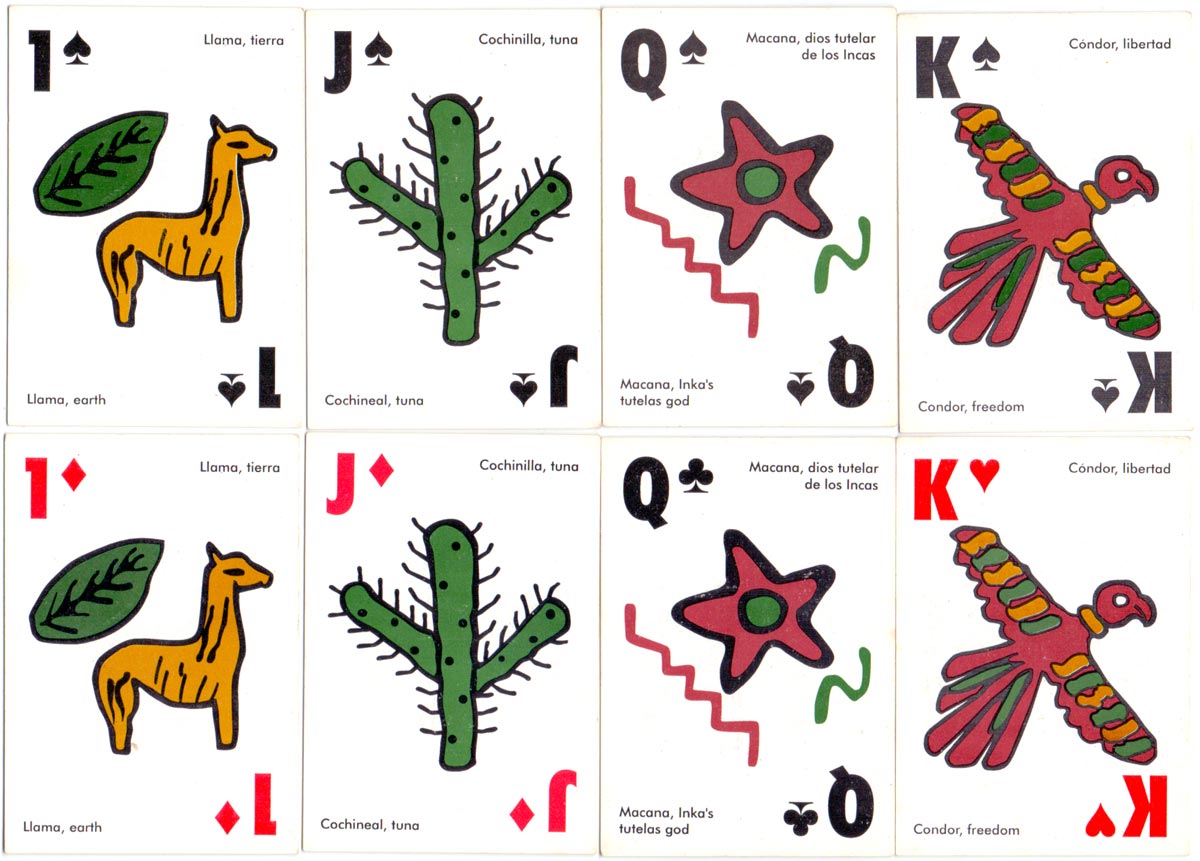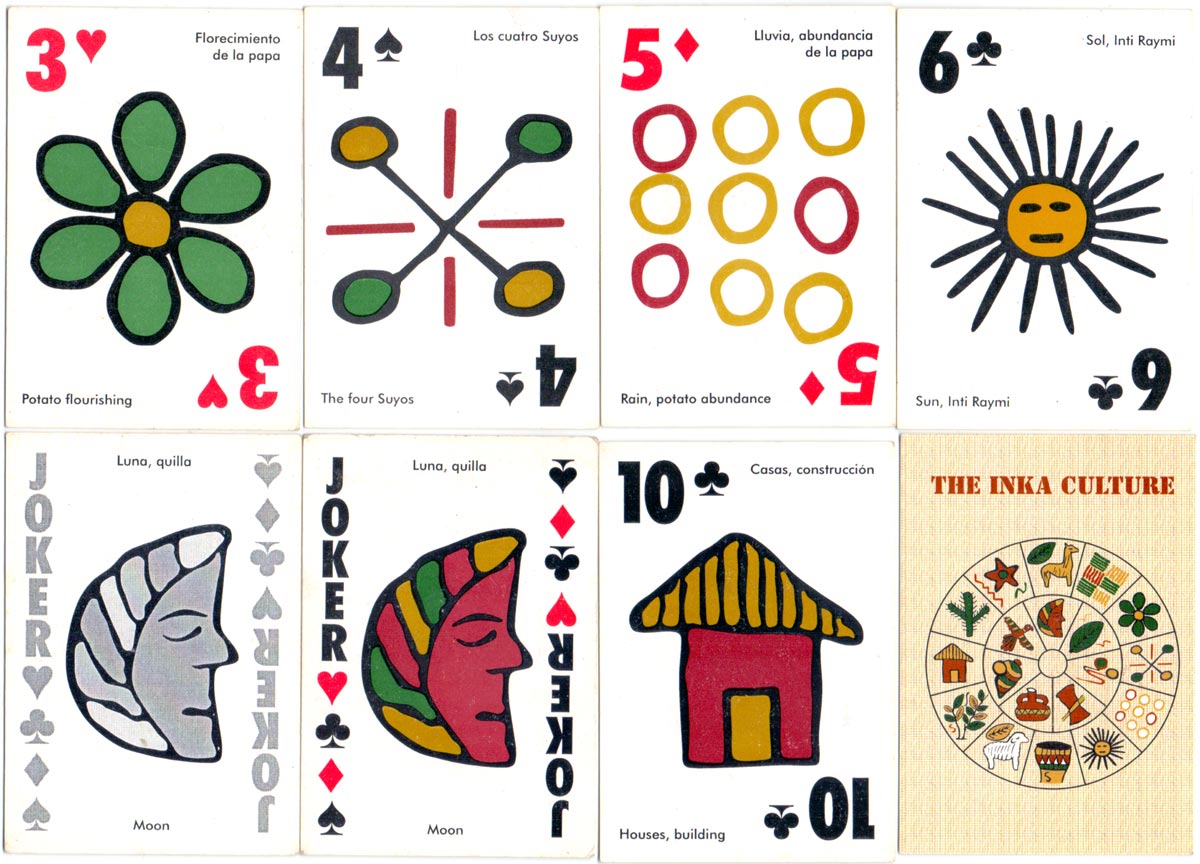Inka Culture
Inka Culture playing cards, Peru, c.2000, promoting alpaca and cotton.
Inka Culture playing cards
Inka Culture playing cards, Peru, c.2000. See also: Inka-Dynasty and Inka-Calendar playing cards. The same images depicting traditional Peruvian culture are repeated in each suit with large, bold indices in the corners and captions in English and Spanish.



Above: Inka Culture playing cards, Peru, c.2000, published by Misk'i Alpaca and Cotton, whose details are shown on the box flap (shown right). The cards have square corners, 52 cards + 2 Jokers.
See also: Inka-Dynasty and Inka-Calendar playing cards.

By Simon Wintle
Member since February 01, 1996
Founder and editor of the World of Playing Cards since 1996. He is a former committee member of the IPCS and was graphics editor of The Playing-Card journal for many years. He has lived at various times in Chile, England and Wales and is currently living in Extremadura, Spain. Simon's first limited edition pack of playing cards was a replica of a seventeenth century traditional English pack, which he produced from woodblocks and stencils.
Related Articles

Colonial Art
A collection of 53 pieces of art showcasing detailed scenes from early American colonial life.

Mardi Gras playing cards
Mardi Gras playing cards illustrated by Dave Edgerly, USA, 2015

Aztec Codex playing cards
Aztec Codex playing cards illustrated by Emmanuel Valtierra, USA, ©2015.

Mario Testino playing cards
A selection of Mario Testino’s photographic work in various fields, notably fashion.

Malam playing cards
Malam playing cards created by Michael Muldoon, USA, 2015.

Pacific Northwest native Indian masks
Pacific Northwest native Indian masks with artwork by Margaret Parrott, USA, 1992.

Baraja Maya
Original designs inspired by Mayan art and culture published by Fernando Güemes, Mexico.

Playing cards from Suriname
Playing cards reflecting the history and culture of Suriname, on the northeastern coast of South Ame...

Inka Naipe Souvenir
54 colour photographs of costumes and artefacts connected with the Inca civilisation, unknown publis...

Vargas Girls
‘Vargas Girls’ paintings by Alberto Vargas in a deck of cards published by Creative Playing Card Co ...

Maya Deck
The Maya Deck produced by Stancraft for Hoyle, 1976.

Tonalamatl
Baraja Tonalamatl Mexican Aztec playing cards based on the prehispanic Codex Borgia manuscript.

Cefacidal
“Cefacidal” / Mead Johnson medical humour advertising playing cards, c.1975.

Trinidad Carnival Playing Cards
“Allfours Carnival Playing Cards” designed by Gabby Woodham, Trinidad, 1995

America
“America” playing cards designed by Teodoro N Miciano, 1960.

Cartas Precolombinas
Spanish playing cards with Pre-Columbian designs from Argentina, 2001.
Trending Articles
Popular articles from the past 28 days


